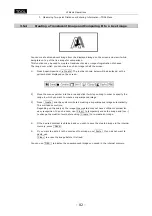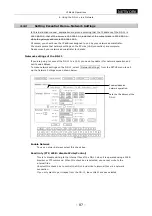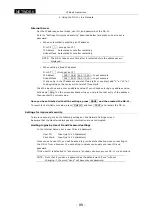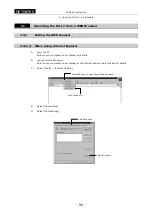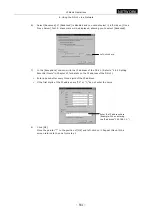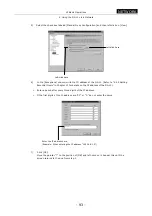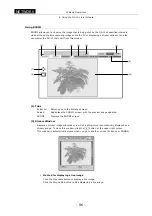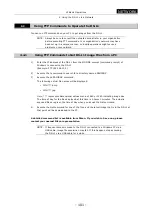
VI Basic Operations
NETWORK
4 Using the DS-L1 via a Network
- 89 -
Limiting connectable IPs
If you want to limit the IP addresses connectable to the DS-L1, select the “IP Authority”
check box. To register the IP addresses that are allowed to connect to the DS-L1, follow
the procedure described below.
Method for registering the IP addresses that are allowed to connect
1) Insert a CF card into the card slot of your computer.
NOTE: A card adapter may be needed depending on your computer.
2) Create a directory named \NET in the CF card.
3) Create a text file that contains a list of the IP addresses that are allowed to connect
to the DS-L1.
Description example
192.168.10.1
192.168.10.10
192.168.10.36
192.168.21.*
A wildcard (*) can be used. In the above example, 1 to 254 are effective.
4) Add an extension “.ip” to the text file and save it in the \NET directory or a
directory hierarchically below it.
(Example: Autho.ip)
5) Insert the CF card into the DS-L1.
6) Connect to the DS-L1 from the PC by Telnet and run the command “w_IPA” to
register the IP addresses. (Refer to “4.5 Using Telnet Commands to Operate on the
DS-L1” in Chapter VI.)
Saving logs of connected users (NETLOG function)
A record can be kept of the IP addresses of the machines that accessed the DS-L1 and of time
information. When accessed from a WEB browser, access logs are kept only when the user IDs
have been set in the Internal Server on the DS-L1 side. However, these logs disappear when the
DS-L1 is powered off.
Run the Telnet command “w_NLGON,” and the initial settings can be changed to display
NETLOG.
To get the data contained in the logs, access the DS-L1 using an FTP command, and get and
read the file labeled NETLOG.txt that is stored in the RAMIBOX directory or a directory
hierarchically below it.
To get the data contained in the logs, access the DS-L1 using an FTP command, and get and
read the file labeled NETLOG.txt that is stored in the RAMIBOX directory or a directory
hierarchically below it.
NETLOG.txt is up to 64 Kbytes in size. If the buffer is filled, the content is automatically erased
and new logs are written to the file beginning with the 0 byte. However, if transfers to an
external server have been set by the w_NLFTON command, the log data is transferred to the
external server before being erased. The file name of this log data consists of the letters NL, the
date (months, days and hours), and the extension “.txt.” (When transferred at 12 o’clock on
April 1, the file name would be NL040112.txt.)
Telnet commands for logs
w_NLGON Displays
NETLOG
w_NLGOF Hides
NETLOG
s_NLGCL
Erases the content of NETLOG
w_NLFTON
Transfers NETLOG when the buffer is filled
w_NLFTOF
Does not transfer NETLOG when the buffer is filled








